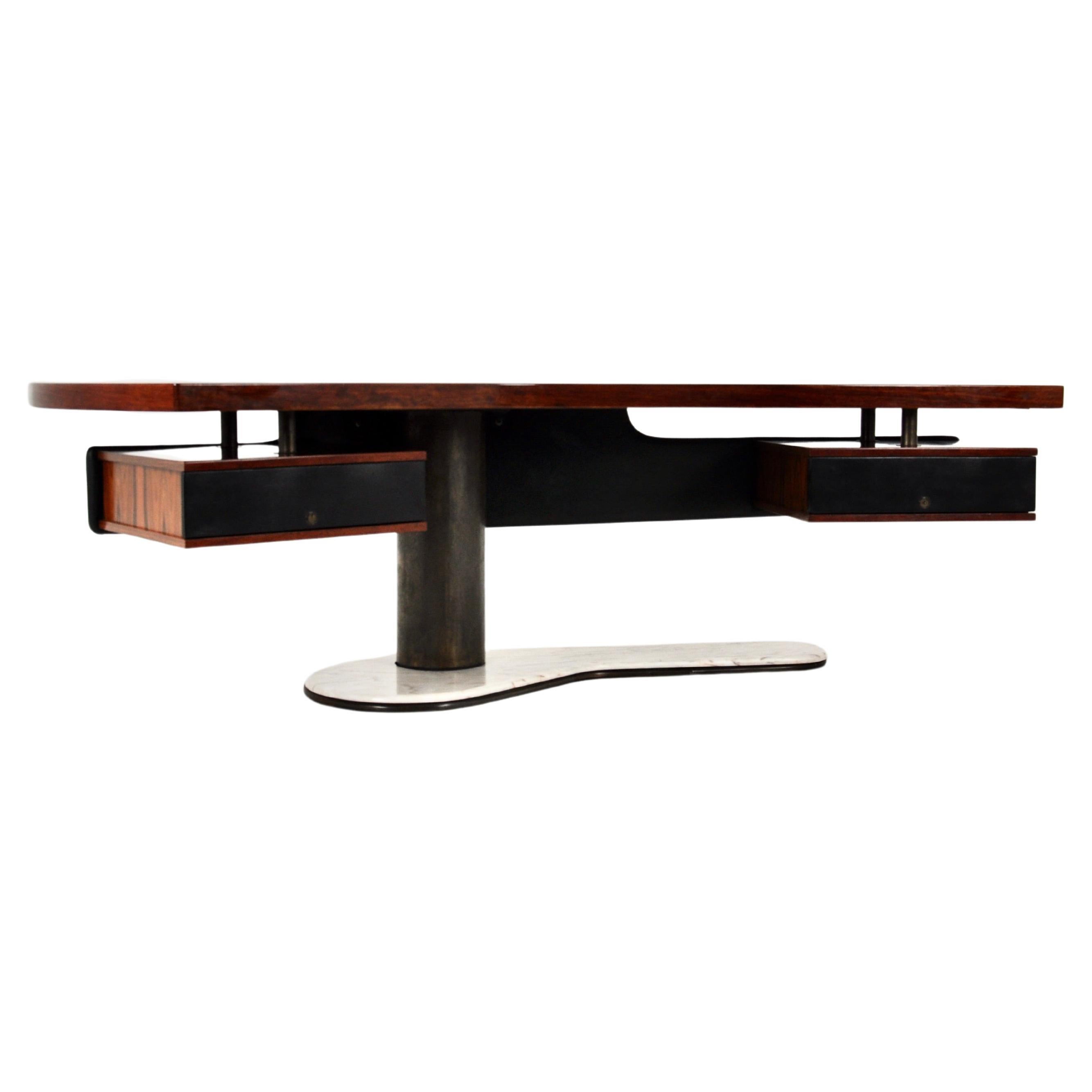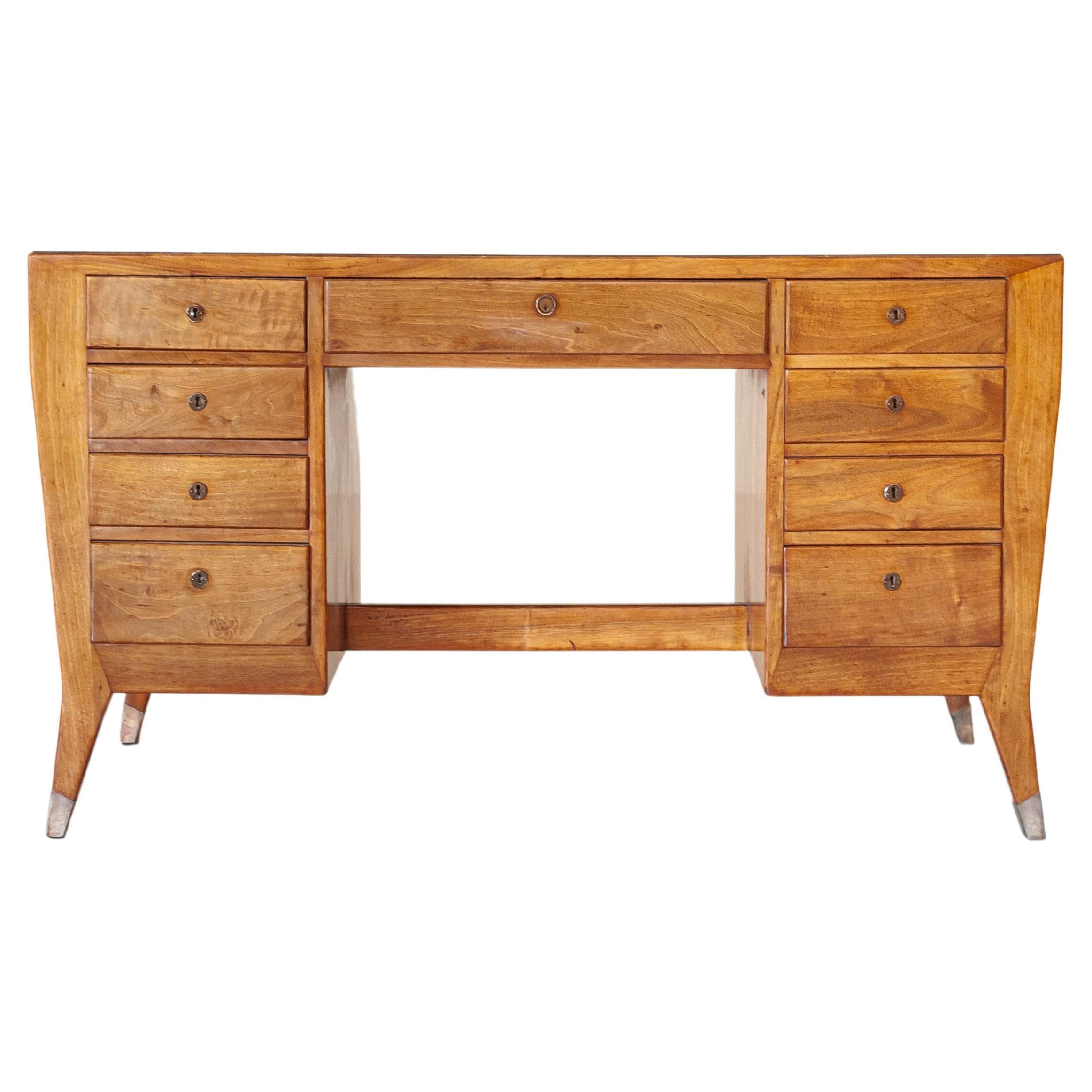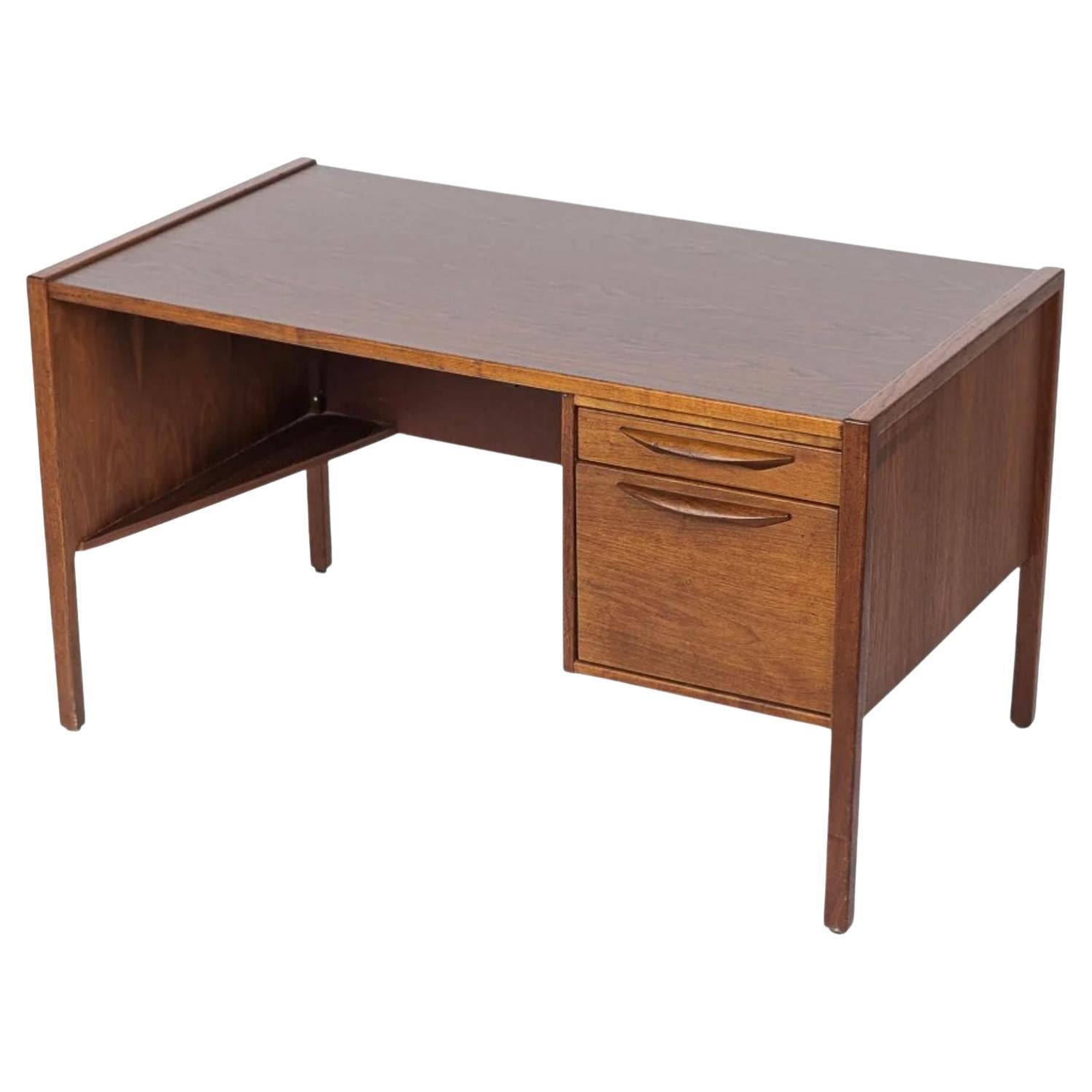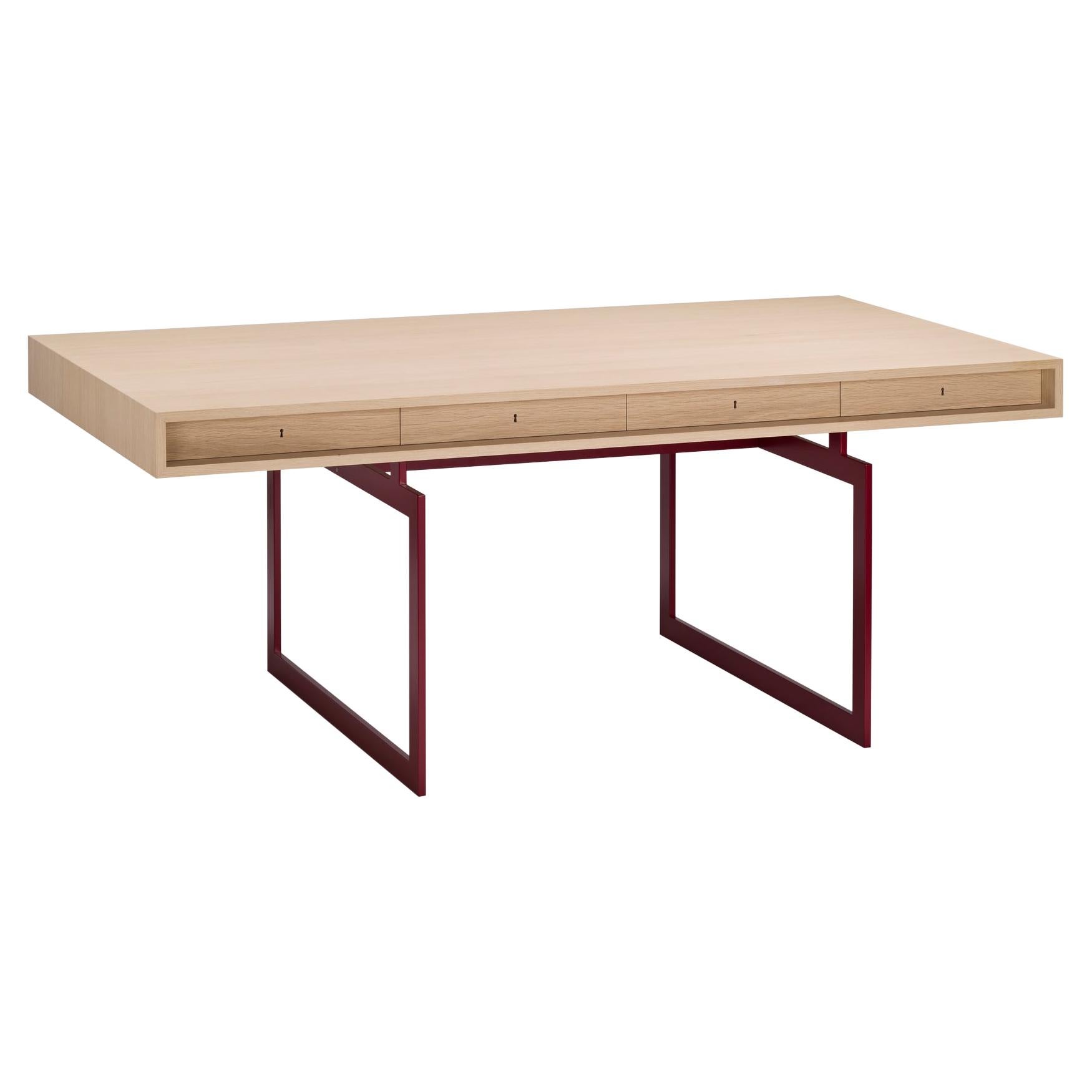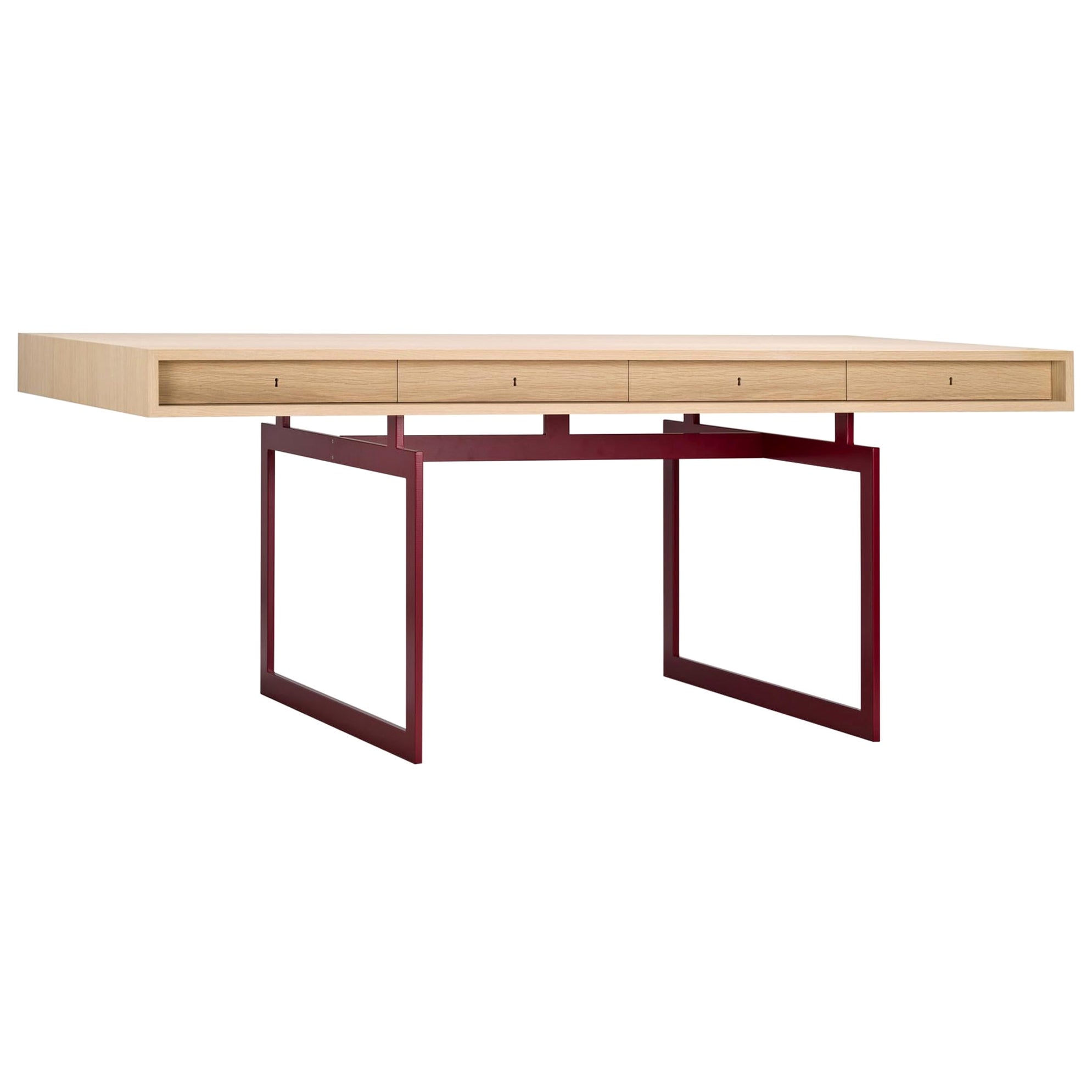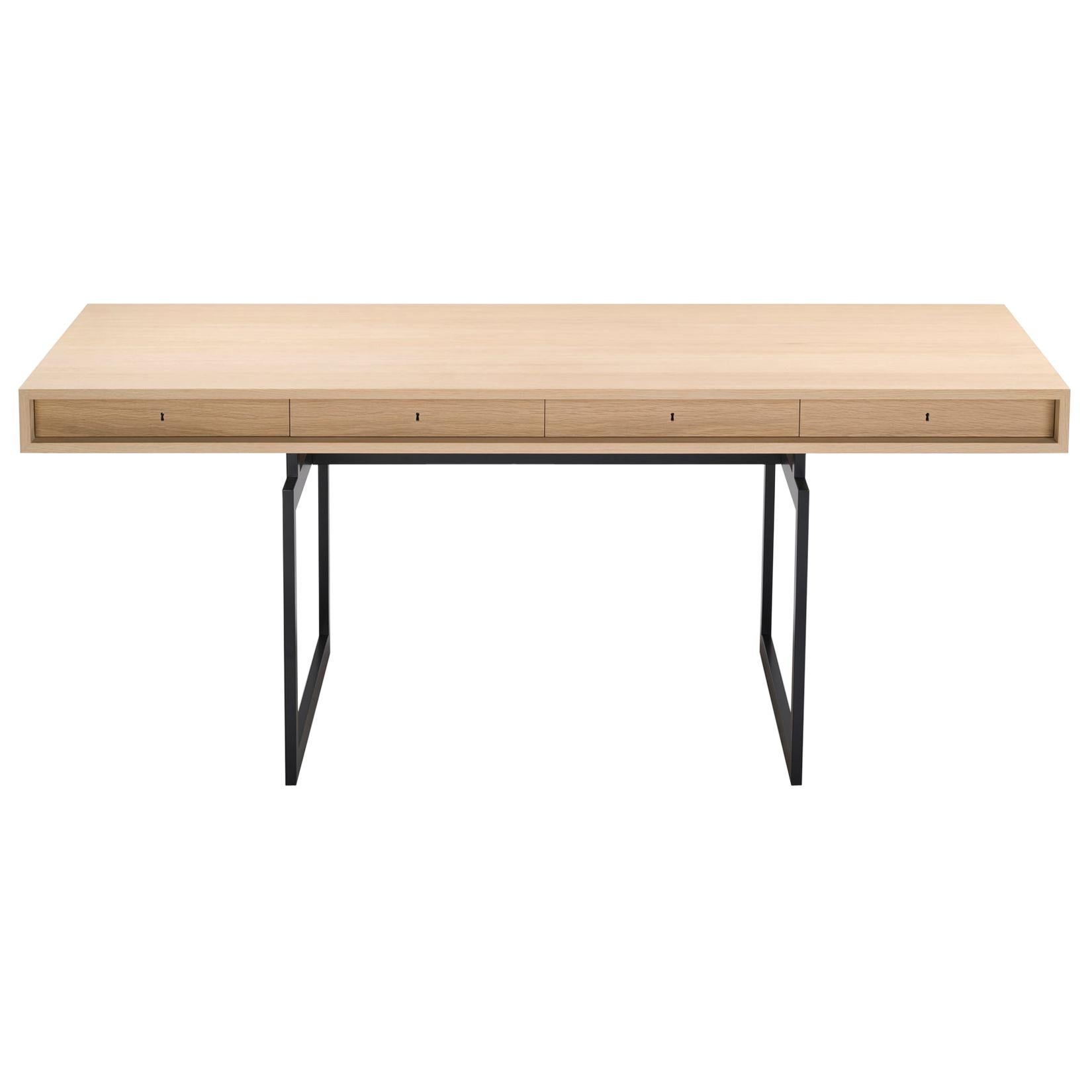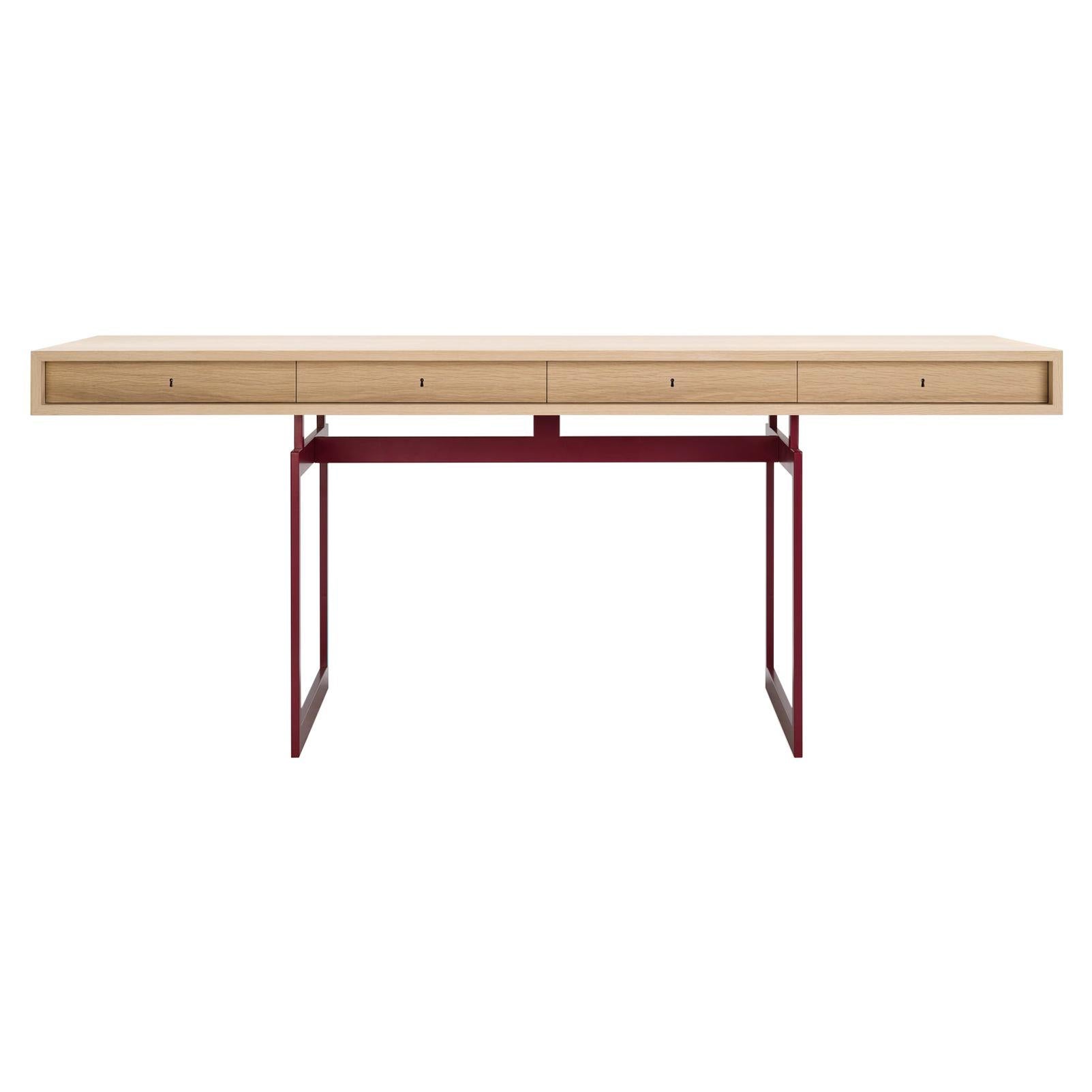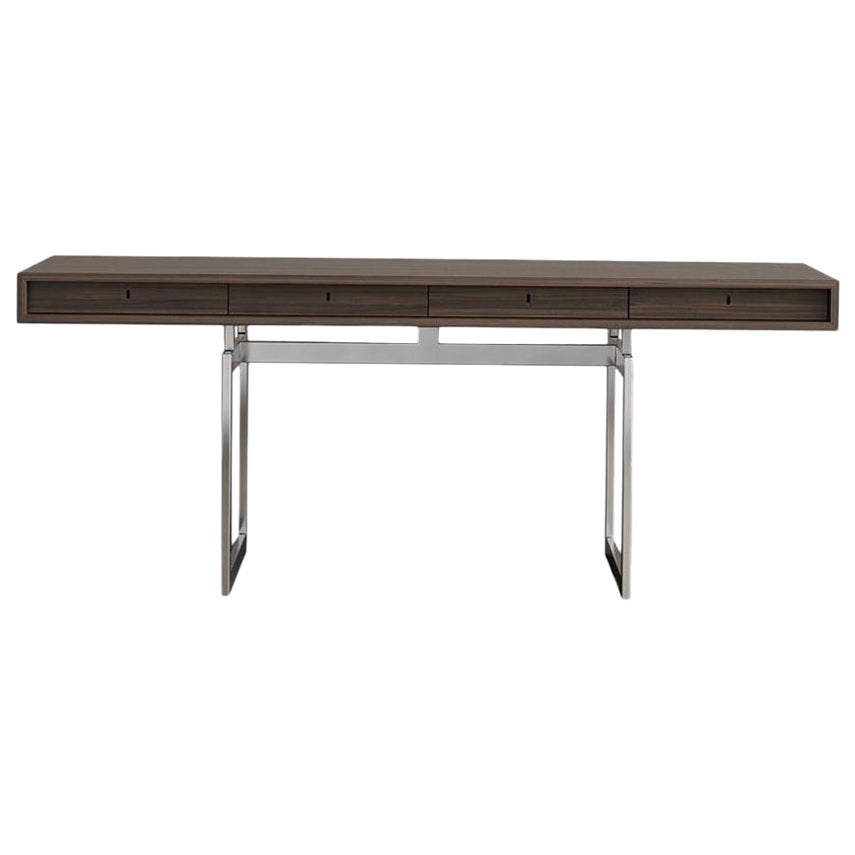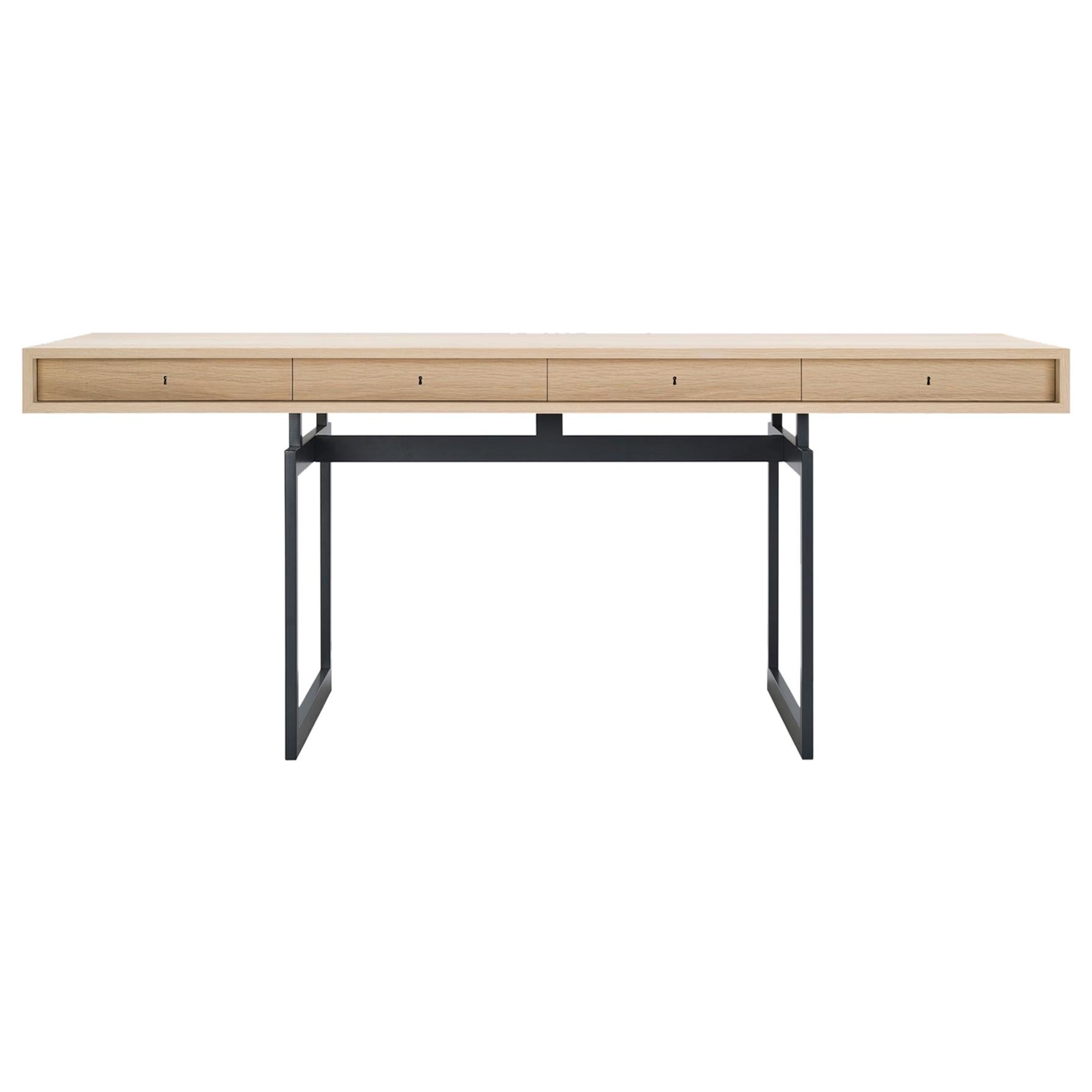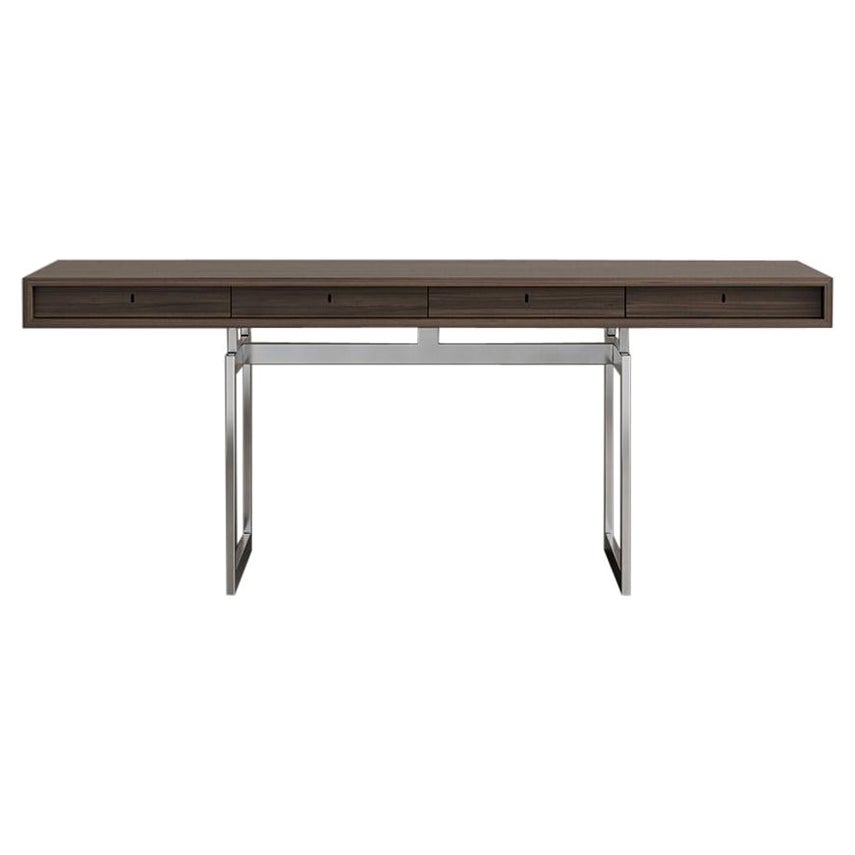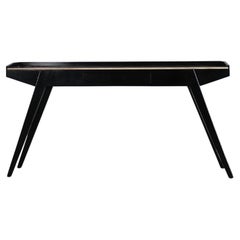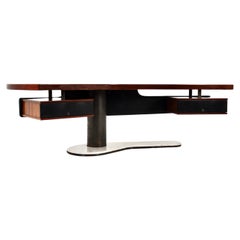
Renzo Schirolli Office Desk in Wood and Brass Italian Manufacture 1960s
View Similar Items
Want more images or videos?
Request additional images or videos from the seller
1 of 6
Renzo Schirolli Office Desk in Wood and Brass Italian Manufacture 1960s
About the Item
- Creator:Schirolli (Author)
- Dimensions:Height: 29.53 in (75 cm)Width: 63 in (160 cm)Depth: 29.53 in (75 cm)
- Style:Mid-Century Modern (Of the Period)
- Materials and Techniques:Brass,Formica,Wood,Other
- Place of Origin:Italy
- Period:1960-1969
- Date of Manufacture:1960s
- Condition:Wear consistent with age and use.
- Seller Location:Montecatini Terme, IT
- Reference Number:1stDibs: LU5304228844702
About the Seller
4.9
Gold Seller
These expertly vetted sellers are highly rated and consistently exceed customer expectations.
1stDibs seller since 2020
99 sales on 1stDibs
More From This SellerView All
- Console Table in Black Lacquered Wood and Pink Marble Italian Manufacture 1950sLocated in Montecatini Terme, ITA Mid-Century Modern style console table with a structure in black lacquered wood and a tabletop in pink marble. The console table presents a single drawer on the frontal part. ...Category
Vintage 1950s Italian Mid-Century Modern Console Tables
MaterialsMarble
$2,287 Sale Price30% Off - Gio Ponti Round Coffee Table in Walnut Wood Italian Manufacture 1950sBy Gio PontiLocated in Montecatini Terme, ITRound coffee table realized in walnut wood with metal details, the tabletop presents an elegant circular decorative motif. Attribuited to Gio Ponti, Italian manufacturer from the 1950s Gio Ponti was an icon of the modernist movement: the Italian designer, architect, artist and publisher contributed significantly to the worlds of architecture and design with his extensive work in fine furniture and ceramics, education, office and residential buildings, and everything in between. Giovanni, known as Gio Ponti was born in 1891 in Milan. It was there that he spent his childhood, and in 1921 he began to study architecture at the Politecnico di Milano. From 1923 to 1930 he served as the artistic director of the Richard-Ginori porcelain factory. In 1927, Ponti started his first architectural office, together with Emilio Lancia, and in 1928 he started the magazine Domus, which is still regarded as one of the most influential European magazines for architecture and design. He was also very influential during the period as a curator of the Milan Triennale. After his collaboration with Emilio Lancia had come to an end, upon completion of the Torre Rasini, he began to work as an architect together with the engineers Antonio Fornaroli and Eugenio Soncini...Category
Vintage 1950s Italian Mid-Century Modern Coffee and Cocktail Tables
MaterialsMetal
$1,830 Sale Price40% Off - Vittorio Introini Chelsea Extendable Table in Walnut Wood by Saporiti 1960sBy Vittorio Introini, SaporitiLocated in Montecatini Terme, ITExtendable Chelsea dining table with a square tabletop and a pyramidal base entirely made in walnut wood and metal details. It was designed by Vittorio Introini and produced by S...Category
Vintage 1960s Italian Mid-Century Modern Dining Room Tables
MaterialsMetal
- Lorenzo Burchiellaro Cart with Wheels in Metal and Glass Italian Manufacture 70sBy Lorenzo BurchiellaroLocated in Montecatini Terme, ITCubic-shaped cart with wheels with frame realized in metal which present a circular void on each side, the top and the bottom of the cart has realized in glass. The cart was design...Category
Vintage 1970s Italian Post-Modern Carts and Bar Carts
MaterialsMetal
- Gio Ponti Table in Oak Brass and Red Laminate Italian Manifacture 1950sBy Gio PontiLocated in Montecatini Terme, ITLarge table or desk with structure in oak wood, tabletop in red laminate and brass details. Designe by Gio Ponti, Italian manufacture from the 1950s. Gio Ponti was an icon of the m...Category
Vintage 1950s Italian Mid-Century Modern Tables
MaterialsBrass
- Franco Albini TL30 Round Table in Metal and Wood for Poggi Pavia 1950s ItalyBy Poggi, Franco AlbiniLocated in Montecatini Terme, ITRound table model TL30 with black lacquered metal base and a wooden top. Designed by Franco Albini for Poggi, Pavia in 1950s. After spending his childhood and part of his youth in Robbiate in Brianza, where he was born in 1905, Franco Albini moved with his family to Milan. Here he enrolled in the Faculty of Architecture of the Polytechnic and graduated in 1929. He starts his professional activity in the studio of Gio Ponti and Emilio Lancia, with whom he collaborates for three years. He probably had his first international contacts here In those three years, the works carried out are admittedly of a twentieth-century imprint. It was the meeting with Edoardo Persico that marked a clear turning point towards rationalism and the rapprochement with the group of editors of “Casabella”. The new phase that that meeting provoked starts with the opening of the first professional studio in via Panizza with Renato Camus and Giancarlo Palanti. The group of architects began to deal with public housing by participating in the competition for the Baracca neighborhood in San Siro in 1932 and then creating the Ifacp neighborhoods: Fabio Filzi (1936/38), Gabriele D’Annunzio and Ettore Ponti (1939). Also in those years Albini worked on his first villa Pestarini. But it is above all in the context of the exhibitions that the Milanese master experiments his compromise between that “rigor and poetic fantasy” coining the elements that will be a recurring theme in all the declinations of his work – architecture, interiors, design pieces . The opening in 1933 of the new headquarters of the Triennale in Milan, in the Palazzo dell’Arte, becomes an important opportunity to express the strong innovative character of rationalist thought, a gym in which to freely experiment with new materials and new solutions, but above all a “method”. Together with Giancarlo Palanti, Albini on the occasion of the V Triennale di Milano sets up the steel structure house, for which he also designs the ‘furniture. At the subsequent Triennale of 1936, marked by the untimely death of Persico, together with a group of young designers gathered by Pagano in the previous edition of 1933, Franco Albini takes care of the preparation of the exhibition of the house, in which the furniture of three types of accommodation. The staging of Stanza per un uomo, at that same Triennale, allows us to understand the acute and ironic approach that is part of Albini, as a man and as a designer: the theme addressed is that of the existenzminimum and the reference of the project is to the fascist myth of the athletic and sporty man, but it is also a way to reflect on low-cost housing, the reduction of surfaces to a minimum and respect for the way of living. In that same year Albini and Romano designed the Ancient Italian Goldsmith’s Exhibition: vertical uprights, simple linear rods, design the space. A theme, that of the “flagpole”, which seems to be the center of the evolution of his production and creative process. The concept is reworked over time, with the technique of decomposition and recomposition typical of Albinian planning: in the setting up of the Scipio Exhibition and of contemporary drawings (1941) the tapered flagpoles, on which the paintings and display cases are hung, are supported by a grid of steel cables; in the Vanzetti stand (1942) they take on the V shape; in the Olivetti store in Paris (1956) the uprights in polished mahogany support the shelves for displaying typewriters and calculators. The reflection on this theme arises from the desire to interpret the architectural space, to read it through the use of a grid, to introduce the third dimension, the vertical one, while maintaining a sense of lightness and transparency. The flagpole is found, however, also in areas other than the exhibition ones. In the apartments he designed, it is used as a pivot on which the paintings can be suspended and rotated to allow different points of view, but at the same time as an element capable of dividing spaces. The Veliero bookcase...Category
Vintage 1950s Italian Mid-Century Modern Dining Room Tables
MaterialsMetal
$2,440 Sale Price20% Off
You May Also Like
- Boomerang desk by Renzo Schirolli, 1960sBy SchirolliLocated in Lasne, BEIncredible boomerang desk with floating leather back panel and wooden and leather drawers. The leg of the desk is made of marble. Wear due to time and age of the deskCategory
Vintage 1960s Italian Mid-Century Modern Desks and Writing Tables
MaterialsMarble, Metal
- Gio Ponti Writing Desk in Walnut and Brass for the BNL Offices, Italy 1940sBy Gio Ponti, SchirolliLocated in Chiavari, LiguriaA rare and collectable walnut desk with brass ferrules designed by Gio Ponti and produced by Schirolli (Mantova - Italy) in the 1940s for the Banca Nazionale del Lavoro (BNL - Nation...Category
Vintage 1940s Italian Mid-Century Modern Desks and Writing Tables
MaterialsBrass
- 1960s Midcentury Desk in Wood & Laminate by Jens RisomBy Jens RisomLocated in Detroit, MIThis vintage Mid-Century Modern desk by Jens Risom circa 1960 has a Classic Danish modern design with clean, Minimalist, geometric lines. The desk is solid, heavy and well-crafted an...Category
Mid-20th Century American Mid-Century Modern Desks and Writing Tables
MaterialsWalnut
- Bodil Kjær Office Desk Table, Wood and Steel by KarakterLocated in Barcelona, BarcelonaTable designed by Bodil Kjær in 1959. We are proud to present our first design from a Danish designer. In this case, Danish architect, professor, and designer, Bodil Kjær. The iconic desk, designed in 1959, was the first of its kind with its pure and simplistic design, almost floating mid-air. Bodil Kjærs’ design has been called ‘The most beautiful desk in the world’ – or, the ‘James Bond desk...Category
2010s Danish Mid-Century Modern Desks and Writing Tables
MaterialsSteel
- Bodil Kjær Office Desk Table, Wood and Steel by KarakterLocated in Barcelona, BarcelonaTable designed by Bodil Kjær in 1959. We are proud to present our first design from a Danish designer. In this case, Danish architect, professor, and designer, Bodil Kjær. The iconic desk, designed in 1959, was the first of its kind with its pure and simplistic design, almost floating mid-air. Bodil Kjærs’ design has been called ‘The most beautiful desk in the world’ – or, the ‘James Bond desk...Category
2010s Danish Mid-Century Modern Desks and Writing Tables
MaterialsSteel
$7,494 Sale Price / item20% Off - Bodil Kjær Office Desk Table, Wood and Steel by KarakterLocated in Barcelona, BarcelonaTable designed by Bodil Kjær in 1959. We are proud to present our first design from a Danish designer. In this case, Danish architect, professor, and designer, Bodil Kjær. The iconic desk, designed in 1959, was the first of its kind with its pure and simplistic design, almost floating mid-air. Bodil Kjærs’ design has been called ‘The most beautiful desk in the world’ – or, the ‘James Bond desk...Category
2010s Danish Mid-Century Modern Desks and Writing Tables
MaterialsSteel
Recently Viewed
View AllMore Ways To Browse
Italian Formica Desk
Formica Table Green
Vintage Green Formica Table
Renzo Schirolli
Renzo Schirolli Desk
Brown Leather Side Table With Brass
Mahogany Leather Top Side Table
Five Leg Table
Midcentury Teak Writing Desk
3 Drawer Table
Desk 60
Decorate Table Desk
Mid Century Desk Unique
Knee Desk Drawers
Caster Drawer
Metal Desk With Drawers
4 Drawer Table
Antique Desk Writing Mahogany
